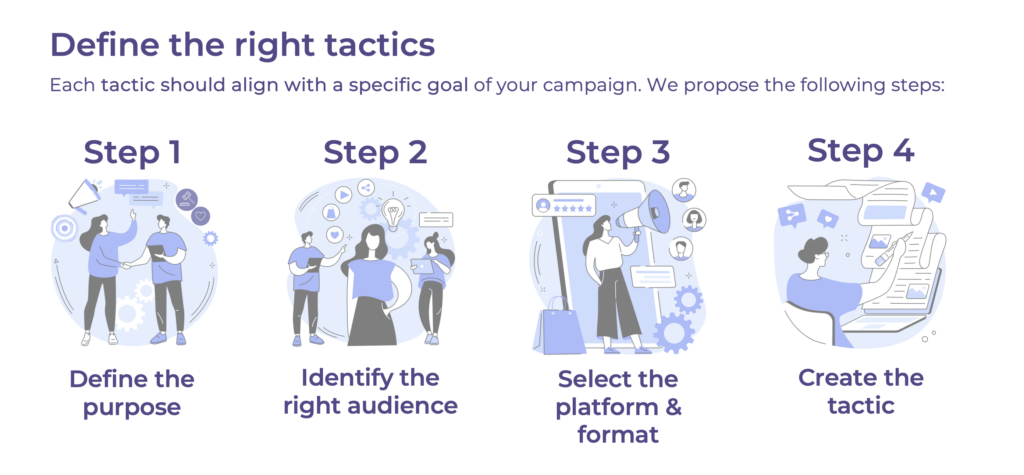Introduction to Tactics

Tactics refer to specific actions, strategies, or methods employed to achieve a particular goal or objective within a broader plan or campaign. In the context of social change, tactics are the practical and operational steps taken to influence public opinion, promote awareness, and bring about desired transformations. These actions are carefully chosen to align with the overall strategy and contribute to the success of the larger campaign. Tactical decisions often involve considerations of the target audience, messaging, channels of communication, and the overall context in which the campaign operates. Tactics can vary widely and may include activities such as public events, media engagement, social media campaigns, direct outreach, and more.
Tactics are usually employed in a multipurpose way, this is not necessarily wrong, but a campaign will benefit from aligning and simplifying. For that purpose, in our approach, we are distinguishing between:
Narrative Tactics
Narrative tactics in a social change campaign involve the strategic use of storytelling and communication methods to shape perceptions, influence attitudes, and evoke emotional responses. These tactics focus on crafting compelling stories, utilizing various content formats such as videos, infographics, and blogs, to convey key messages and values. The goal is to create a narrative that resonates with the target audience, fostering understanding, empathy, and support for the campaign’s objectives.
Advocacy Tactics
Advocacy tactics centre around actions aimed at influencing policies, decisions, and social norms to bring about systemic change. These tactics go beyond storytelling and involve direct engagement with decision-makers, mobilizing communities, and leveraging public support. Advocacy tactics may include organizing petitions, engaging in lobbying efforts, conducting awareness campaigns, and collaborating with stakeholders. The objective is to drive tangible changes in laws, policies, or societal perceptions, aligning with the campaign’s overarching goals.
Define the right tactics for your campaign

Each tactic should align with the specific goals of the campaign and make sure the tactic selected is the best for accomplishing that goal. To define the right tactics, we propose a methodology for decision-making; each step is consequential to the next which means the order matters and decisions are made based on the information of the step before:
- Define the Purpose: Consider the desired outcome for this tactic. Do you need a video to create awareness, a petition to gather signatures, or an infographic to provide simple how-to information on voting? Defining the purpose (why) of a tactic is essential to its success.
- Identify the Right Audience: Determine the intended audience for this tactic. Who is the audience you want to persuade, inform, or mobilize? Understanding who we are talking to is crucial.
- Select the Platform & Format: Whether it’s a parent’s school meeting, posters in the community, or a post on social media, defining where and how the tactic will best reach the intended audience is essential.
- Create the Tactic: Once you have all the previous steps, it will become easier to determine what type of tactic to use: maybe a short video, a compelling petition, or an informative infographic. Align the tactic with your strategic goals.
